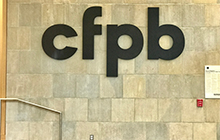 On January 19, 2021, the Consumer Financial Protection Bureau (CFPB) issued a new final rule implementing the Fair Debt Collection Practices Act (FDCPA). According the CFPB’s press release, the purpose of the new final rule is to “clarif[y] the differences between regulations and supervisory guidance.” Specifically, “supervisory guidance does not have the force and effect of law and the Bureau does not take enforcement actions or issue supervisory criticisms based on non-compliance with supervisory guidance. Rather, supervisory guidance outlines supervisory expectations and priorities, or articulates views regarding appropriate practices for a given subject area.” Regulations, on the other hand, “do have the force and effect of law and enforcement actions can be taken if regulated institutions are in violation.”
On January 19, 2021, the Consumer Financial Protection Bureau (CFPB) issued a new final rule implementing the Fair Debt Collection Practices Act (FDCPA). According the CFPB’s press release, the purpose of the new final rule is to “clarif[y] the differences between regulations and supervisory guidance.” Specifically, “supervisory guidance does not have the force and effect of law and the Bureau does not take enforcement actions or issue supervisory criticisms based on non-compliance with supervisory guidance. Rather, supervisory guidance outlines supervisory expectations and priorities, or articulates views regarding appropriate practices for a given subject area.” Regulations, on the other hand, “do have the force and effect of law and enforcement actions can be taken if regulated institutions are in violation.”
The substantive content of the new final rule is not altogether new, but rather a codification of the September 11, 2018 Interagency Statement Clarifying the Role of Supervisory Guidance (the 2018 Statement), collectively issued by CFPB, the Office of the Comptroller of the Currency (OCC), Board of Governors of the Federal Reserve System (Board), Federal Deposit Insurance Corporation (FDIC), and National Credit Union Administration (NCUA). In the new final rule, the CFPB explained that “[b]y codifying the 2018 Statement, with amendments, the final rule confirms that the Bureau will continue to follow and respect the limits of administrative law in carrying out its supervisory responsibilities.”
The CFPB’s final rule offered certain clarifications to its policies and practices related to supervisory guidance. For example, the CFPB intends to “limit the use of numerical thresholds” in its supervisory guidance and, in cases where such thresholds are used, clarify that they “are exemplary only and not suggestive of requirements.” Furthermore, CFPB examiners will be instructed not to “criticize” a supervised financial institution for instances of “non-compliance” with supervisory guidance. Criticisms will be reserved for “practices, operations or other matters that could cause consumer harm or could cause violations of laws, regulations, final agency orders, or other legally enforceable conditions.” Rather than using supervisory guidance as the basis for criticism, examiners will instead “reference” such guidance when providing “examples of appropriate consumer protection and risk management practices….”
Similar final rules were also issued by the OCC, Board, FDIC, and NCUA.
